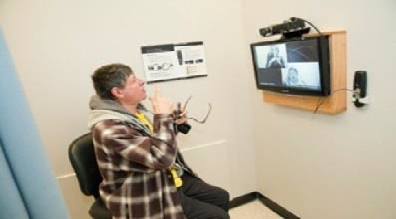A collaborative program between the Northwest ADA Center (NWADC) and the Department of Corrections (DOC) has improved awareness and opportunities for countless incarcerated individuals and their visitors throughout the Washington state DOC system.
This initiative has addressed not only physical accessibility (see Part 1), but has also provided enhanced opportunities and improved policies that benefit people with disabilities who are participating in DOC programs.
In the second part of this two-part series, we explore the policy and programmatic changes that were the result of the DOC accessibility survey.
“We are committed to incarcerated individuals with disabilities to have access to programs, services and activities as this helps ensure their success when they are released from custody back to their communities and families. Programs and services provide incarcerated individuals with education and pro-social skills in order to achieve successful re-entry and reduces recidivism. Successful re-entry helps to meet the Department’s mission of working together for safe communities.” - Risa Klemme, ADA Compliance Manager
Assessment
Staff from NWADAC formed teams for each site survey comprising steering committee members, the site ADA Coordinator, and the site plant manager. These teams surveyed each of the 12 prison facilities and 14 work release facilities, which included parking lots, program areas, living units, and other areas.
Policies and programs were evaluated through the use of interviews, including both staff and a subset of incarcerated individuals with disabilities.
Some of the 30 programs examined:
- Adult Basic Education
- General Education Diploma (GED)
- Information Technology
- Technical Design
- Ornamental Horticulture
- Prison Pet Partnership Program
- Residential Parenting Program
- Braille Program
- Cosmetology
- Carpentry
Teams reviewed facility policies for information about policies for promoting access, including distribution of information about rights, methods for identifying incarcerated individuals with disabilities, plans for safe evacuations, and posting of the “Notice of Rights for Incarcerated Individuals with Disabilities”. Each one of the 30 programs was reviewed at least twice within the DOC system.
Successful Outcomes
Policies:

- Notices of Rights for Incarcerated Individuals and Public were posted.
- An ADA Coordinator was designated in the policies for each facility.
- The method for identifying incarcerated individuals with disabilities was updated, so that incarcerated individuals with disabilities could be accurately identified and provided with accommodations
- Emergency management plans were generated for the safe evacuation of incarcerated individuals with disabilities, and drills were conducted. Processes were changed to reflect that at least one drill per year include a strong ADA component.
Programs:
- Staff were made aware of reasonable modifications to enable incarcerated individuals, visitors, and the public to participate in and benefit from programs, services and activities.
- Staff were educated on the range of disabilities possible, as a common misconception was that a person with a disability is a wheelchair user.
- Annual statewide training was established for all ADA Coordinators and ADA Steering Committee members.
Best Practices
The team was pleasantly surprised to find several examples of best practices in the DOC system. Highlights included:
- Some facilities had active ADA Committees that met monthly.
- Several facilities had an Access Assistant program. Through this program incarcerated individuals assist others with disabilities (e.g., push wheelchair, help move through line and gather food at mealtimes, read documents).
- Staff were receptive to and interested in making their facilities more accessible.
- Some of the Minimum Security Units (work camps) were more accessible than previously presumed, and were opened up to incarcerated individuals with more types of disabilities.
- The Department has done a good job of communicating to incarcerated individuals that we have a process for getting ADA needs known. Incarcerated individuals are aware of how to make their ADA needs known to staff.
“Most people are very interested in ADA and want to help but they don’t always know how, so ongoing discussion is important. Almost everyone knows someone that has some sort of accessibility challenge so ADA is something that all staff can relate to”- Risa Klemme, interim ADA Compliance Manager
New projects: As a result of this work, two exciting projects have been initiated.
Generation of the Accommodation Status Report (ASR)
|
Video Relay Project
|

.png)





